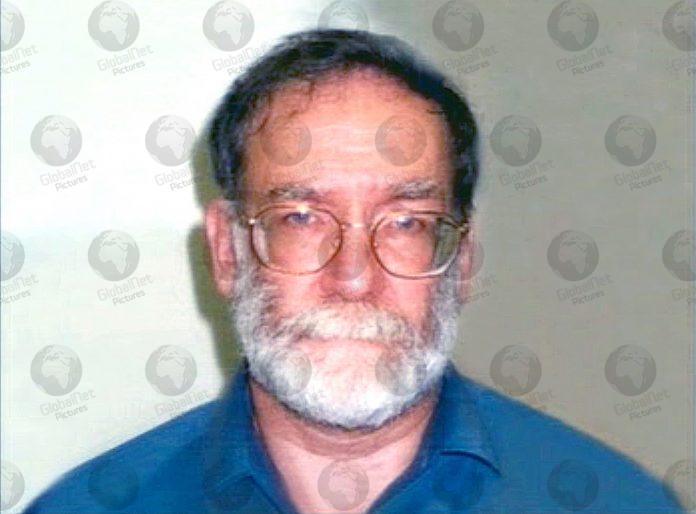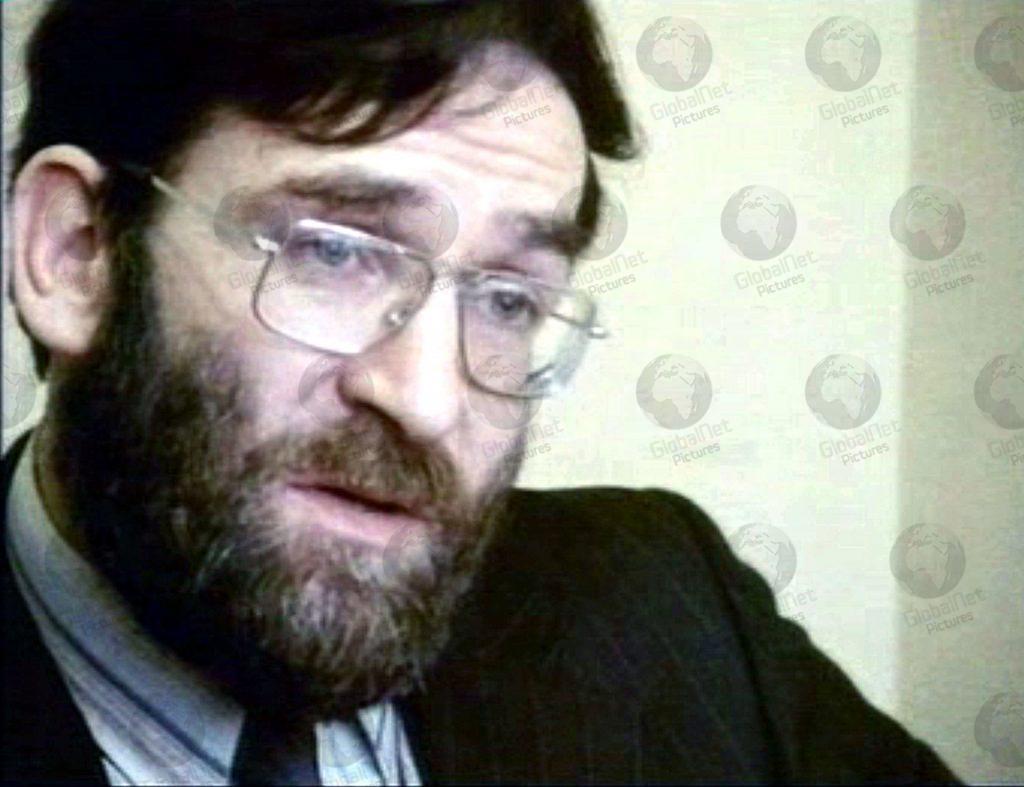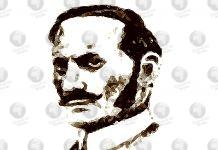

English doctor turned serial killer responsible for up to 250 deaths of mainly elderly patients
Harold Frederick Shipman (14 January 1946 – 13 January 2004) was an English GP and one of the most prolific serial killers in history. On 31 January 2000, a jury found Shipman guilty of 15 murders of patients under his care. He was sentenced to life imprisonment with the recommendation that he never be released.
The Shipman Inquiry, a two-year-long investigation of all deaths certified by Shipman, which was chaired by Dame Janet Smith, examined Shipman’s crimes. The inquiry identified 218 victims and estimated his total victim count at 250, about 80% of whom were elderly women. His youngest confirmed victim was a 41-year-old man, although “significant suspicion” arose that he had killed patients as young as four.
Much of Britain’s legal structure concerning health care and medicine was reviewed and modified as a result of Shipman’s crimes. He is the only British doctor to have been found guilty of murdering his patients, although other doctors have been acquitted of similar crimes or convicted on lesser charges.
Shipman died on 13 January 2004, one day prior to his 58th birthday, by hanging himself in his cell at Wakefield Prison.
Early life and career
Harold Frederick Shipman was born on the Bestwood council estate in Nottingham, England, the second of the three children of Harold Frederick Shipman (12 May 1914 – 5 January 1985), a lorry driver, and Vera Brittan (23 December 1919 – 21 June 1963). His working-class parents were devout Methodists. When growing up, he was an accomplished rugby player in youth leagues.
Shipman passed his eleven-plus in 1957, moving to High Pavement Grammar School, Nottingham, which he left in 1964. He excelled as a distance runner and in his final year at school, served as vice-captain of the athletics team. Shipman was particularly close to his mother, who died of lung cancer when he was 17. Her death came in a manner similar to what later became Shipman’s own modus operandi: in the later stages of her disease, she had morphine administered at home by a doctor. Shipman witnessed his mother’s pain subside, despite her terminal condition, until her death on 21 June 1963.
On 5 November 1966, Shipman married Primrose May Oxtoby. They had four children together.
Shipman studied medicine at Leeds School of Medicine, graduating in 1970. He began working at Pontefract General Infirmary in Pontefract, West Riding of Yorkshire, and in 1974 took his first position as a (GP) at the Abraham Ormerod Medical Centre in Todmorden, West Yorkshire. In the following year, he was caught forging prescriptions of pethidine (Demerol) for his own use. He was fined £600, and briefly attended a drug rehabilitation clinic in York. He became a GP at the Donneybrook Medical Centre in Hyde near Manchester, in 1977.
Shipman continued working as a GP in Hyde throughout the 1980s, and began his own surgery at 21 Market Street in 1993, becoming a respected member of the community. In 1983, he was interviewed in an edition of the Granada TV documentary World in Action on how the mentally ill should be treated in the community. A year after his conviction, the interview was re-broadcast on Tonight with Trevor McDonald.
Detection
In March 1998, Linda Reynolds of the Donneybrook Surgery in Hyde, prompted by Deborah Massey from Frank Massey and Sons funeral parlour, expressed concerns to John Pollard, the coroner for the South Manchester District, about the high death rate among Shipman’s patients. In particular, she was concerned about the large number of cremation forms for elderly women that he had needed countersigned. The matter was brought to the attention of the police, who were unable to find sufficient evidence to bring charges; the Shipman Inquiry later blamed the police for assigning inexperienced officers to the case. Between 17 April 1998, when the police abandoned the investigation, and Shipman’s eventual arrest, he killed three more people.
In August 1998, taxi driver John Shaw, from Hyde, contacted the police, informing them that he suspected Shipman of murdering 21 of his patients.
His last victim was Kathleen Grundy, who was found dead at her home on 24 June 1998. Shipman was the last person to see her alive; he later signed her death certificate, recording “old age” as the cause of death. Grundy’s daughter, lawyer Angela Woodruff, became concerned when solicitor Brian Burgess informed her that a will had been made, apparently by her mother. There were doubts about its authenticity. The will excluded her and her children, but left £386,000 to Shipman. Burgess told Woodruff to report it, and she went to the police, who began an investigation. Grundy’s body was exhumed and when examined, was found to contain traces of diamorphine (heroin), often used for pain control in terminal cancer patients. Shipman claimed that she was an addict and showed them comments in his computerised medical journal, but a program on his computer that recorded ghost actions showed they were written after her death. Shipman was arrested on 7 September 1998, and was found to own a typewriter of the kind used to make the forged will.
The police then investigated other deaths Shipman had certified, and created a list of 15 specimen cases to investigate. They discovered a pattern of his administering lethal doses of diamorphine, signing patients’ death certificates, and then falsifying medical records to indicate that they had been in poor health.
Prescription For Murder, a 2000 book by journalists Brian Whittle and Jean Ritchie, advanced two theories on Shipman’s motive for forging the will: that he wanted to be caught because his life was out of control, or that he planned to retire at the age of 55 and leave the UK.
In 2003, David Spiegelhalter et al. suggested that “statistical monitoring could have led to an alarm being raised at the end of 1996, when there were 67 excess deaths in females aged over 65 years, compared with 119 by 1998.”
Trial and punishment
Shipman’s trial began at Preston Crown Court on 5 October 1999. Shipman was charged with the murders of Marie West, Irene Turner, Lizzie Adams, Jean Lilley, Ivy Lomas, Muriel Grimshaw, Marie Quinn, Kathleen Wagstaff, Bianka Pomfret, Norah Nuttall, Pamela Hillier, Maureen Ward, Winifred Mellor, Joan Melia and Kathleen Grundy by lethal injections of diamorpine, all between 1995 and 1998. His legal representatives tried, but failed, to have the Grundy case, where a clear motive was alleged, tried separately from the others, where no motive was apparent.
On 31 January 2000, after six days of deliberation, the jury found Shipman guilty of 15 counts of murder and one count of forgery. Mr Justice Forbe subsequently sentenced Shipman to life imprisonment on all 15 counts of murder, with a recommendation that he never be released, to be served concurrently with a sentence of four years for forging Grundy’s will. On 11 February 2000, 10 days after his conviction, the General Medical Council formally struck Shipman off its register. Two years later, Home Secretary David Blunkett confirmed the judge’s whole life tariff, just months before British government ministers lost their power to set minimum terms for prisoners.
While authorities could have brought many additional charges, they concluded that a fair hearing would be impossible in view of the enormous publicity surrounding the original trial. Furthermore, the 15 life sentences already handed down rendered further litigation unnecessary.
Shipman consistently denied his guilt, disputing the scientific evidence against him. He never made any public statements about his actions. Shipman’s wife, Primrose, steadfastly maintained her husband’s innocence, even after his conviction.
Shipman is the only doctor in the history of British medicine found guilty of murdering his patients. John Bodkin Adams was charged in 1957 with murdering a patient, amid rumours he had killed dozens more over a 10-year period and “possibly provided the role model for Shipman”. However, he was acquitted. Historian Pamela Cullen has argued that because of Adams’ acquittal, there was no impetus to examine the flaws in the British system until the Shipman case.
Hanged
Shipman hanged himself in his cell at Wakefield Prison at 06:20 on 13 January 2004, on the eve of his 58th birthday, and was pronounced dead at 08:10. A Prison Service statement indicated that Shipman had hanged himself from the window bars of his cell using bed sheets.
Some of the victims’ families said they felt cheated, as his suicide meant they would never have the satisfaction of Shipman’s confession nor answers as to why he committed his crimes. The Home Secretary David Blunkett noted that celebration was tempting, saying: “You wake up and you receive a call telling you Shipman has topped himself and you think, is it too early to open a bottle? And then you discover that everybody’s very upset that he’s done it.”
His death divided national newspapers, with the Daily Mirror branding him a “cold coward” and condemning the Prison Service for allowing his suicide to happen. However, The Sun ran a celebratory front-page headline; “Ship Ship hooray!” The Independent called for the inquiry into Shipman’s suicide to look more widely at the state of Britain’s prisons as well as the welfare of inmates. In The Guardian, an article by Sir David Ramsbotham, a former Chief Inspector of Prisons, suggested that whole life sentencing be replaced by indefinite sentencing, for this would at least give prisoners the hope of eventual release and reduce the risk of their ending their own lives by suicide as well as making their management easier for prison officials.
Shipman’s motive for suicide was never established, though he reportedly told his probation officer that he was considering suicide to assure his wife’s financial security after he was stripped of his (NHS) pension. Primrose Shipman received a full NHS pension; she would not have been entitled to if Shipman had lived past 60. Additionally, there was evidence that his wife, who had consistently protested Shipman’s innocence despite the overwhelming evidence, had begun to suspect his guilt. Shipman refused to take part in courses leading toward a full confession of his crimes, leading to temporary removal of privileges, including the opportunity to telephone his wife. During this period, according to Shipman’s cellmate, he received a letter from Primrose exhorting him to, “Tell me everything, no matter what.” A 2005 inquiry found that Shipman’s suicide “could not have been predicted or prevented,” but that procedures should nonetheless be re-examined.
Aftermath
In January 2001, Chris Gregg, a senior West Yorkshire detective, was selected to lead an investigation into 22 of the West Yorkshire deaths. Following this, the Shipman Inquiry into Shipman’s activities, submitted in July 2002, concluded that he had killed at least 215 of his patients between 1975 and 1998, during which time he practised in Todmorden, West Yorkshire (1974–1975), and Hyde, Greater Manchester (1977–1998). Dame Janet Smith, the judge who submitted the report, admitted that many more deaths of a suspicious nature could not be definitively ascribed to him. Most of his victims were elderly women in good health.
In her sixth and final report, issued on 24 January 2005, Smith reported that she believed that Shipman had killed three patients, and she had serious suspicions about four further deaths, including that of a four-year-old girl, during the early stage of his medical career at Pontefract General Infirmary. In total, 459 people died while under his care between 1971 and 1998, but it is uncertain how many of those were murder victims, as he was often the only doctor to certify a death. Smith’s estimate of Shipman’s total victim count over that 27-year period was 250.
The GMC charged six doctors, who signed cremation forms for Shipman’s victims, with misconduct, claiming they should have noticed the pattern between Shipman’s home visits and his patients’ deaths. All these doctors were found not guilty. In October 2005, a similar hearing was held against two doctors who worked at Tameside General Hospital in 1994, who failed to detect that Shipman had deliberately administered a “grossly excessive” dose of morphine. The Shipman Inquiry recommended changes to the structure of the General Medical Council.
In 2005, it came to light that Shipman might have stolen jewellery from his victims. In 1998, police had seized over £10,000 worth of jewellery they found in his garage. In March 2005, when Primrose Shipman asked for its return, police wrote to the families of Shipman’s victims asking them to identify the jewellery.
Unidentified items were handed to the Assets Recovery Agency in May. The investigation ended in August. Authorities returned 66 pieces to Primrose Shipman and auctioned 33 pieces that she confirmed were not hers. Proceeds of the auction went to Tameside Victim Support. The only piece returned to a murdered patient’s family was a platinum diamond ring, for which the family provided a photograph as proof of ownership.
A memorial garden to Shipman’s victims, called the Garden of Tranquillity, opened in Hyde Park on 30 July 2005.
As of early 2009, families of the victims of Shipman were still seeking compensation for the loss of their relatives. In September 2009, authorities announced that letters Shipman wrote in prison would be sold at auction, but following complaints from victims’ relatives and the media, they withdrew the letters from the sale.
Shipman effect
The Shipman case, and a series of recommendations in the Shipman Inquiry report, led to changes to standard medical procedures in Britain (now referred to as the “Shipman effect”). Many doctors reported changes in their dispensing practices, and a reluctance to risk over-prescribing pain medication may have led to under-prescribing. Death certification practices were altered as well. Perhaps the largest change was the movement from single-doctor general practices to multiple-doctor general practices. This was not a direct recommendation, but rather because the report stated that there was not enough safeguarding and monitoring of doctors’ decisions.





